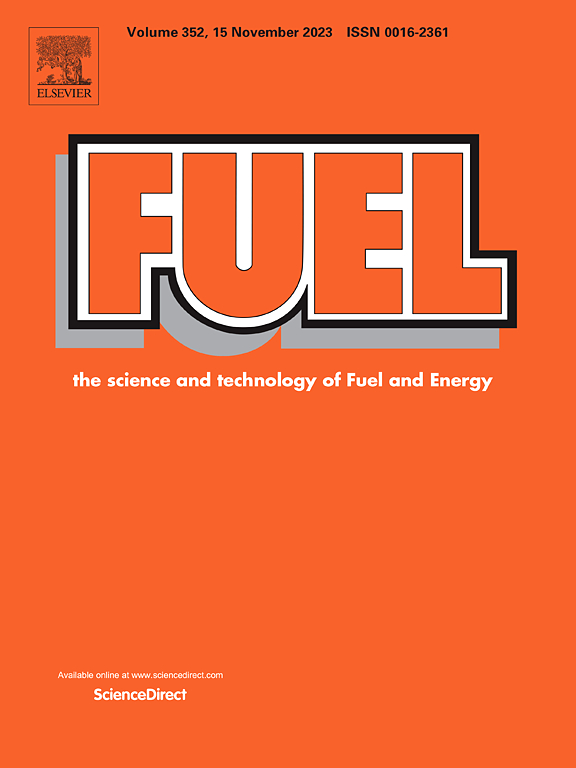On the thermal degradation of palm frond and PLA 3251D biopolymer: TGA/FTIR experimentation, thermo-kinetics, and machine learning CDNN analysis
IF 6.7
1区 工程技术
Q2 ENERGY & FUELS
引用次数: 0
Abstract
The increasing volume of plastics entering landfills and aquatic environments, coupled with the rising energy costs of thermally degrading them, poses serious concerns for policymakers and environmental agencies around the globe. This study presents, for the first time, a comprehensive analysis of the thermal degradation of palm frond (PF), polylactic acid (PLA 3251D), and their biocomposites using thermogravimetric analysis and Fourier Transform Infrared spectroscopy (TGA/FTIR), along with kinetics, thermodynamics, and machine learning convolutional neural networks (CDNN). The TGA measurements were conducted at heating rates of 10, 20, and 40 °C·min−1, covering degradation temperatures ranging from 25 to 600 °C and varying sample compositions: pure PF, 25 % PF, 50 % PF, and pure PLA. The experimental measurements revealed a synergistic interaction between the PF biomass and PLA plastic, resulting in a reduction in the thermal stability of PLA at temperatures below 400 °C due to the high moisture, cellulose, and hemicellulose content of the PF biomass. In contrast, the presence of lignin content in PF biomass and blends slows their degradation at higher temperatures. The Borchardt & Daniels (BD) model-fitting and Starink (STK) model-free iso-conversional methods were employed to estimate the potential reaction mechanisms, as well as the kinetic and thermodynamic parameters of the degradation process. These models yielded activation energies ranging from 13.539 to 265.948 kJ·mol−1 and from 84.087 to 145.284 kJ·mol−1, respectively. The overall average activation energies were estimated to be 105.204 kJ·mol−1 using the BD method and 103.586 kJ·mol−1 using the STK method. The application of the machine learning CDNN modelling technique facilitated the development of learning algorithms and an optimal CDNN framework characterized by two layers, each consisting of four hidden neurons. This approach successfully reduced the overall cost function of the process to 0.245, yielding accurate predictions of the experimental results (), providing interpolated thermograms and activation energies that align within the limits of the experimental operating conditions, and identifying sample composition as the key parameter driving the thermal degradation process. This study is anticipated to furnish critical insights for plastic manufacturers regarding the design and optimization of biodegradable plastics tailored for specific applications, thereby minimizing the energy requirements associated with their thermal degradation once they are rendered obsolete.
求助全文
约1分钟内获得全文
求助全文
来源期刊

Fuel
工程技术-工程:化工
CiteScore
12.80
自引率
20.30%
发文量
3506
审稿时长
64 days
期刊介绍:
The exploration of energy sources remains a critical matter of study. For the past nine decades, fuel has consistently held the forefront in primary research efforts within the field of energy science. This area of investigation encompasses a wide range of subjects, with a particular emphasis on emerging concerns like environmental factors and pollution.
 求助内容:
求助内容: 应助结果提醒方式:
应助结果提醒方式:


